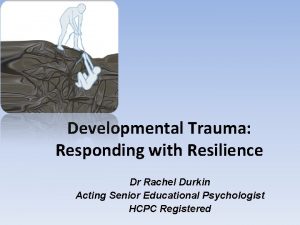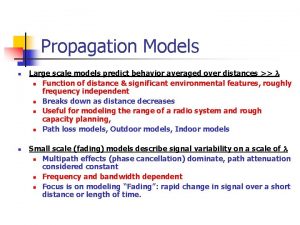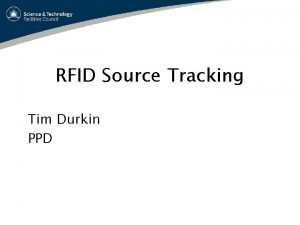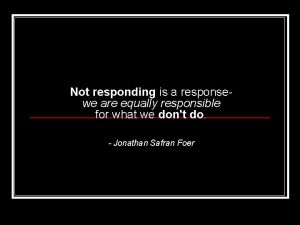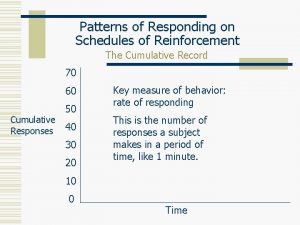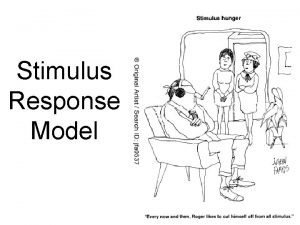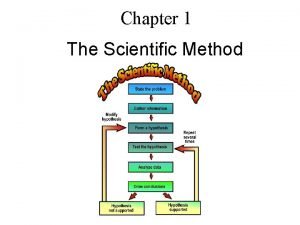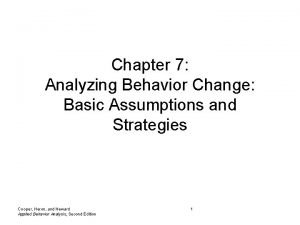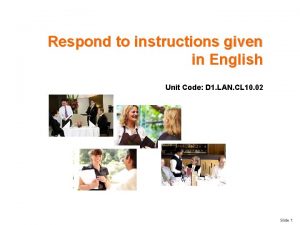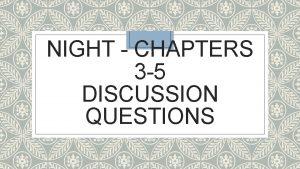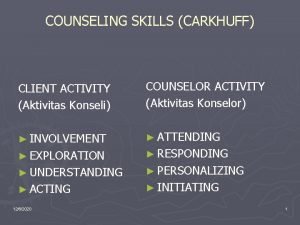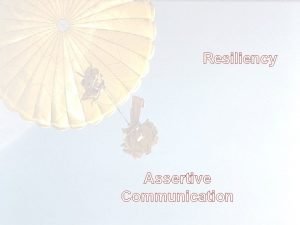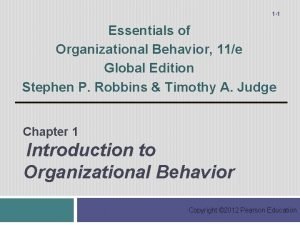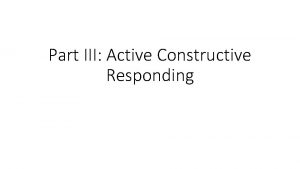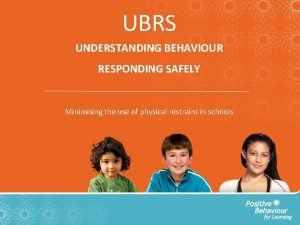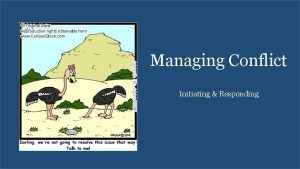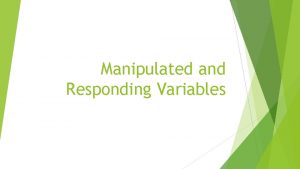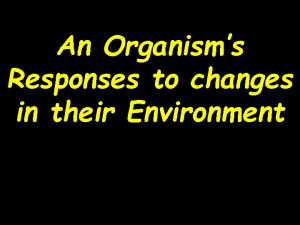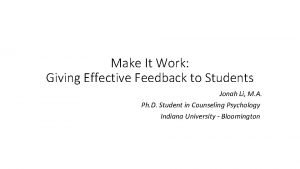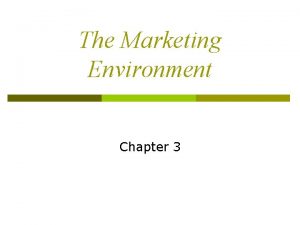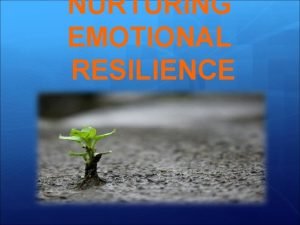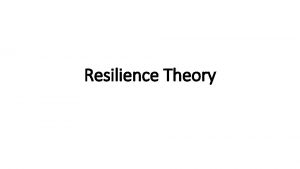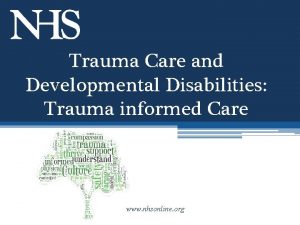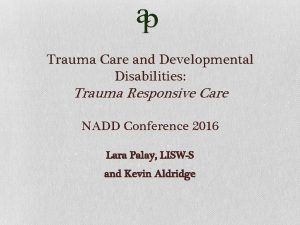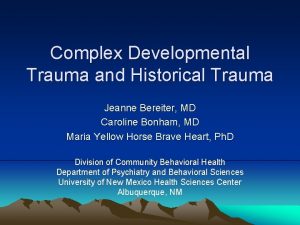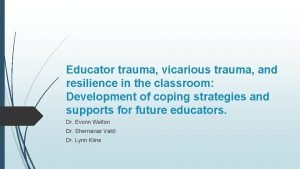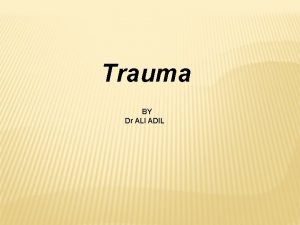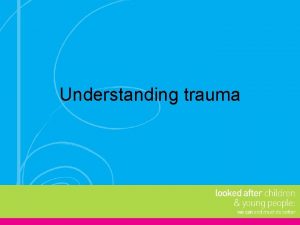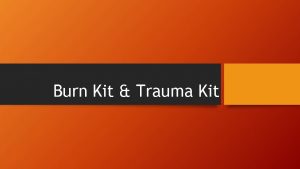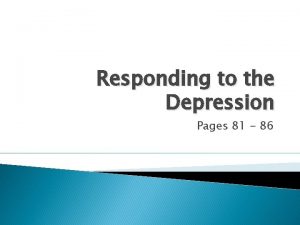Developmental Trauma Responding with Resilience Dr Rachel Durkin






























- Slides: 30

Developmental Trauma: Responding with Resilience Dr Rachel Durkin Acting Senior Educational Psychologist HCPC Registered

Aim of Presentation • Local context: what are our current ways of responding to children who have experienced trauma and adversity? • To provide an overview of current theories around ‘developmental trauma’ • How can a resilient community combat the effects of adversity? Hopes and aspirations for future work: How can we work resiliently as a community in St Helens?

Adverse Childhood Experiences (ACEs)


How many young people do you know who have experienced one or more ACEs? How are these typically responded to?

Common approaches/ interventions • • • Nurture groups Behaviour management plans Referral for further professional assessment Referral for therapy Alternative provision Developing Additional support resiliency?

Be Reflective Practitioner! • What works: evidence based and practice based. • Be open to new ideas: even if these don’t ‘fit’ with other existing views. • Be curious and wonder about the children we work with. • Be aspirational: whilst the past may shape us it does not define us.

A different perspective: Developmental Trauma

www. youtube. com: search Beacon House

Our core messages… • Attachment is ONLY 1 PART of the puzzle • Developmental Trauma starts in the Brainstem • If we get ‘stuck’ in the Brainstem, other areas of the brain don’t develop well • If we get ‘stuck’ in the Brainstem, our stress response is highly developed and too easily accessed



Window of Tolerance



Young people whose needs were not met naturally find ways of adapting to the adults around them They develop ‘survival behaviours’ which usually fall into fight/flight (hyper-arousal) or freeze/collapse (hypoarousal) responses and always function to protect them from perceived harm.

Mental health services are often organised around psychiatric diagnostic labels. For traumatised children, their survival behaviours are vulnerable to being misunderstood; mis-diagnosed and therefore… treated with interventions targeting the outward symptoms, rather than the hidden unresolved trauma.

What if there was a survival strategy behind the labels? !

What if there was a survival strategy behind the labels? !

www. youngminds. org. uk

How can we work creatively and holistically, with our young person at the centre? • Observe the child at their best • • • Consult with the child, carer and other key adults Plan-do-review Solution focused practice Team Around the Child meetings Teach about resilience Psycho-education

Cr ea t en ing vir th on er m ape en u ts tic Holistic, therapeutic approaches Responsive action Developing skills Environmental adaptations

Team Around the Child Trigger Points and observed behaviours Context /Chronology Protective Factors: why are these successful? Social Workers Other Professionals CHILD/YP Carer/s School staff Outcomes and Aspirations

Picture/ case study





Final thoughts… • How can we work together to use our existing resources to support children who have experienced adversity? • How can we empower those affected by trauma? How can you use your EP time effectively to meet the needs of growing numbers of vulnerable groups?

Thank you for your time and attention. Any Questions…. racheldurkin@sthelens. gov. uk
 Rachel durkin
Rachel durkin Models-nn
Models-nn Tj durkin
Tj durkin Dr eoin o'sullivan endocrinologist cork clinic
Dr eoin o'sullivan endocrinologist cork clinic What is congratulation expression
What is congratulation expression Not responding is a response
Not responding is a response Scalloped pattern of responding
Scalloped pattern of responding Stimulus response feedback model
Stimulus response feedback model Cpi model
Cpi model The fourth step in the scientific method is
The fourth step in the scientific method is Affective objectives examples
Affective objectives examples Baseline logic aba
Baseline logic aba An indirect, dishonest way to control or influence others
An indirect, dishonest way to control or influence others Responding to instructions
Responding to instructions Manipulated variable and responding variable graph
Manipulated variable and responding variable graph Responding angles
Responding angles Night chapter 5 discussion questions
Night chapter 5 discussion questions Attending responding personalizing initiating
Attending responding personalizing initiating How companies react to the marketing environment
How companies react to the marketing environment Active constructive responding
Active constructive responding Responding to economic pressures in ob
Responding to economic pressures in ob Responding to globalization in ob
Responding to globalization in ob Why are line graphs powerful tools in science?
Why are line graphs powerful tools in science? Joy multiplier
Joy multiplier Ubrs training
Ubrs training Bcf model conflict resolution
Bcf model conflict resolution Manipulated and responding variables
Manipulated and responding variables Making and responding to requests 2 bac
Making and responding to requests 2 bac Responding to internal stimuli
Responding to internal stimuli Active constructive responding
Active constructive responding Responding to the marketing environment
Responding to the marketing environment
